New
Click the "new" menu in the left navigation area to open the new window, which supports the creation of new Process, new Library, and new Process from Enterprise process template.
Process
Create a new blank Process, and design a new automated Process from the blank Process diagram.
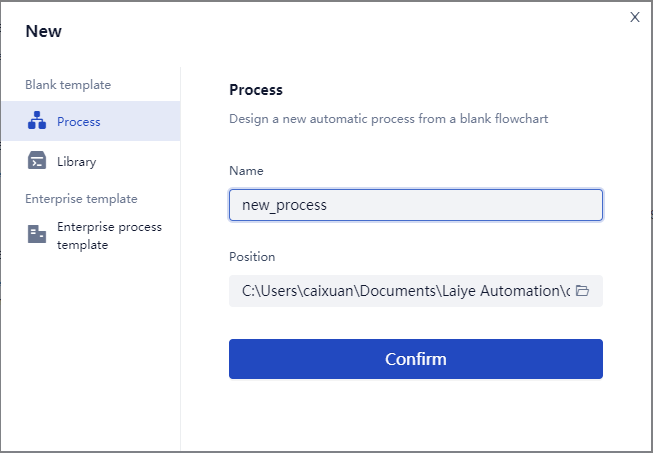
Name The default Process name generated when creating a new one usually has a numeric suffix. Of course, you can edit the name to the name of the Process you want.
Position The default path is: C:\users\{Windows user name}\documents\laiye automation\creator\ projects. You can click the folder icon behind the input box for custom settings.
Click the "create" button to automatically enter the Process editing window, as shown in the following figure.
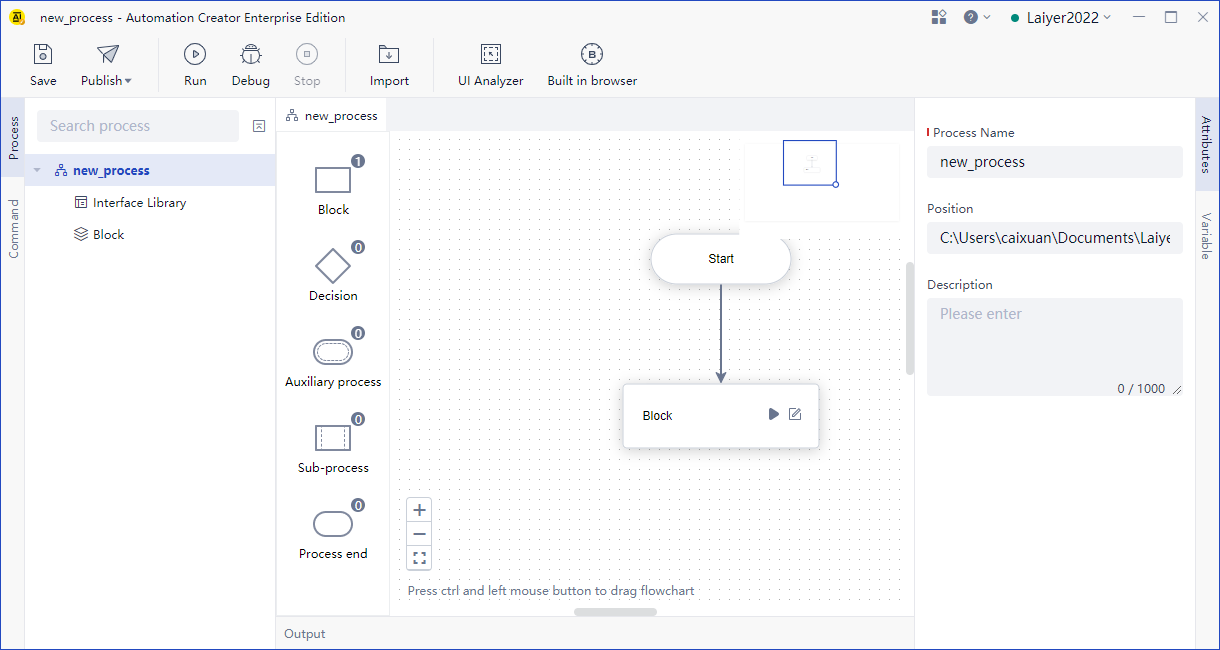
Library
The Library is used to create components that can be reused by Process.
Write a script in botscript language or combine multiple visual commands to realize the specified functions, and then publish them into a Library file. Install the Library file into the command center, which can be added to the command area and reused as a Extension command.
- Name Edit the name of the new Library, or use the default Library name
- Position Set the location of the new command inventory. The default path is c:\users\{Windows user name}\documents\laiye rpa\creator\libs. You can click the folder icon behind the input box to customize the settings.
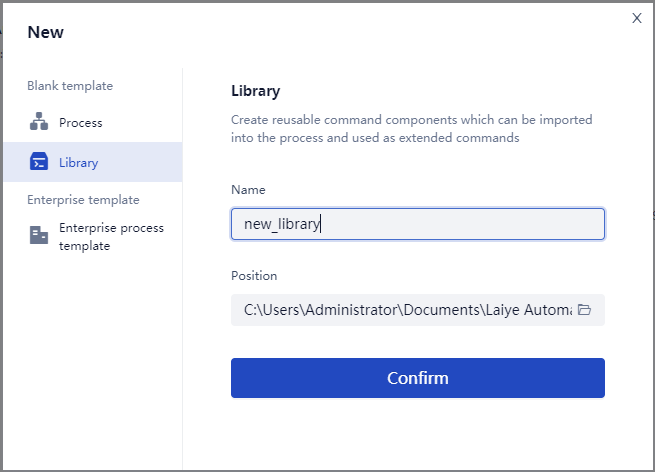
- Click the "create" button to automatically enter the Process editing window, as shown in the following figure.
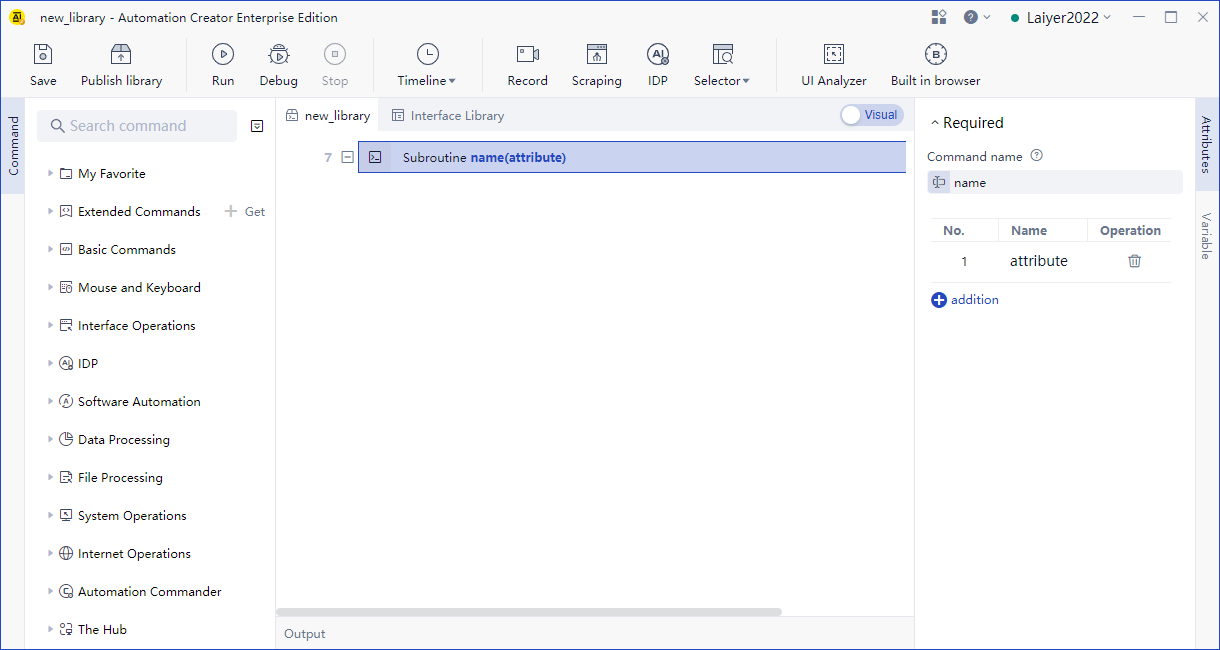
Enterprise process template
Laiye RPA developers can select "Enterprise process template" to create a new Process, that is, create an RPA Process based on a preset template Process. This Process is a transactional Process that follows the best practices of large-scale deployment.
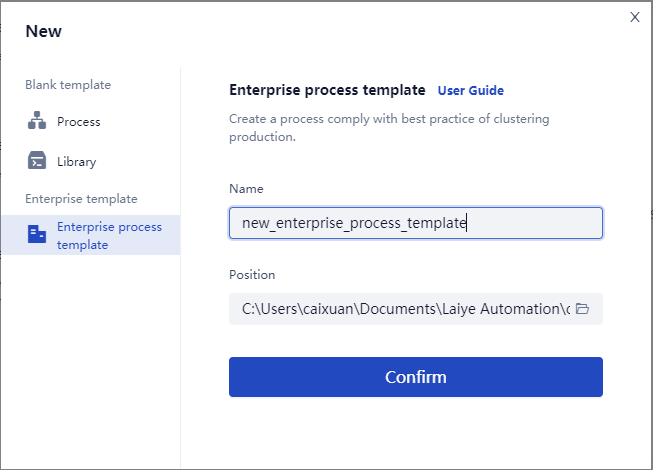
The Enterprise process template is a robust and scalable Process template (hereinafter referred to as "template"), which draws on many successful RPA project practices: initializing the Process starting point, external global configuration, robust exception handling (n retries, fault tolerance), and meaningful logging; When implementing large-scale RPA Process or large-scale deployment, you can create Process based on this goal to help RPA implementation engineers and RPA developers reduce RPA development and maintenance costs, and help to control the quality of the implementation process. When used in Process scenarios with obvious transactional characteristics, the effect is better.
- Note: during use, click the "User Guide" button to open and view the local introduction document about Enterprise process template - laiye enterprise level Process template User Guide.Pdf.
Click the "create" button to automatically enter the Process editing window, as shown in the following figure. By pre configuring multiple components to achieve different functional modules and fault tolerance mechanisms, and planning the direction of the business Process, a Process template for data processing is built:
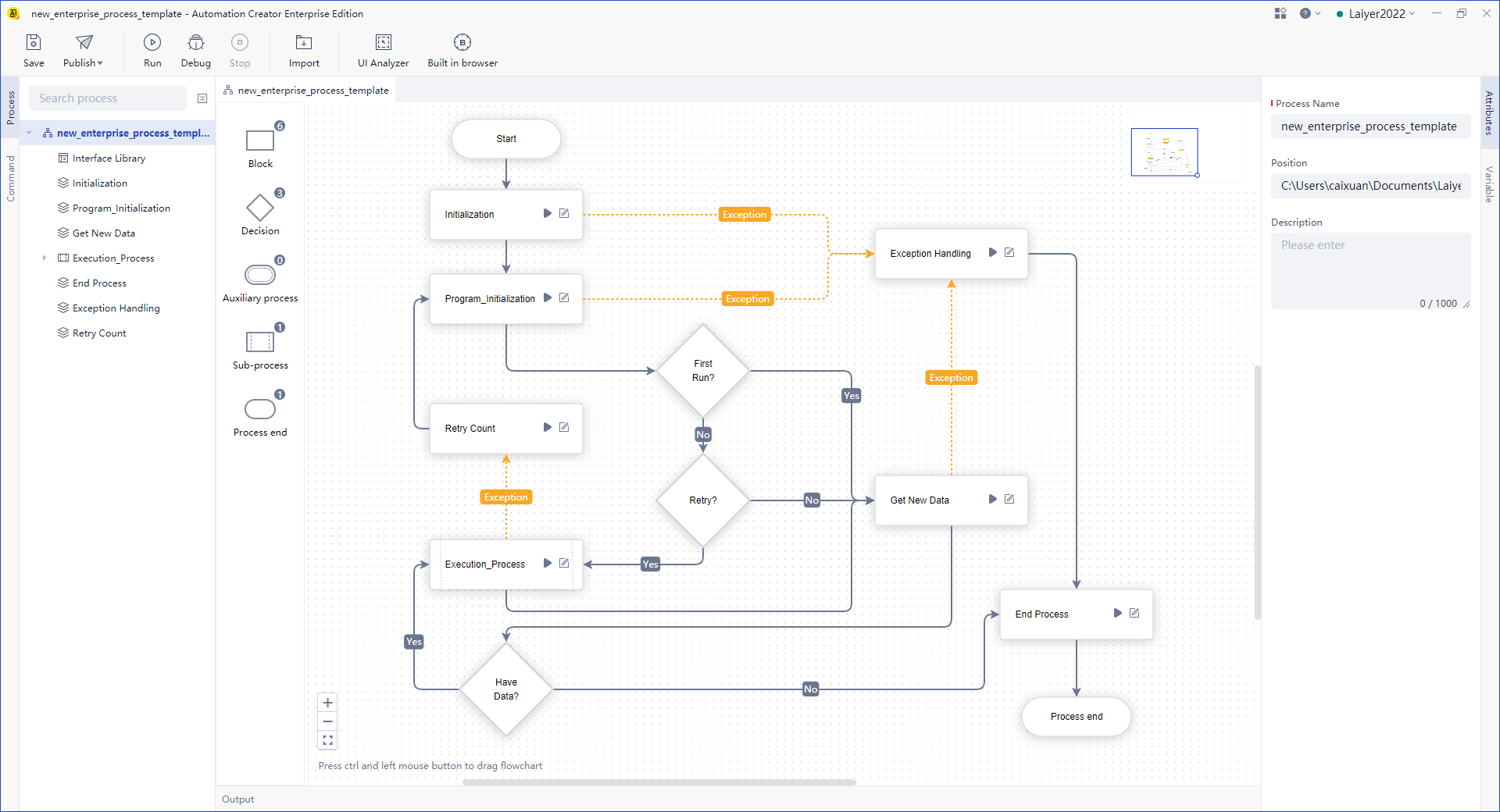
click Learn more about Enterprise process template.